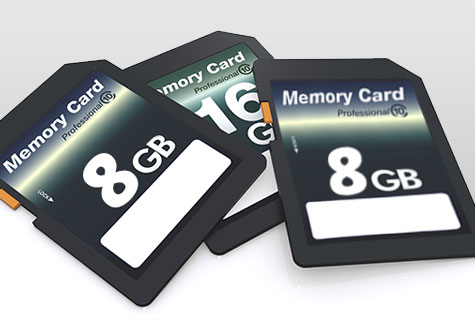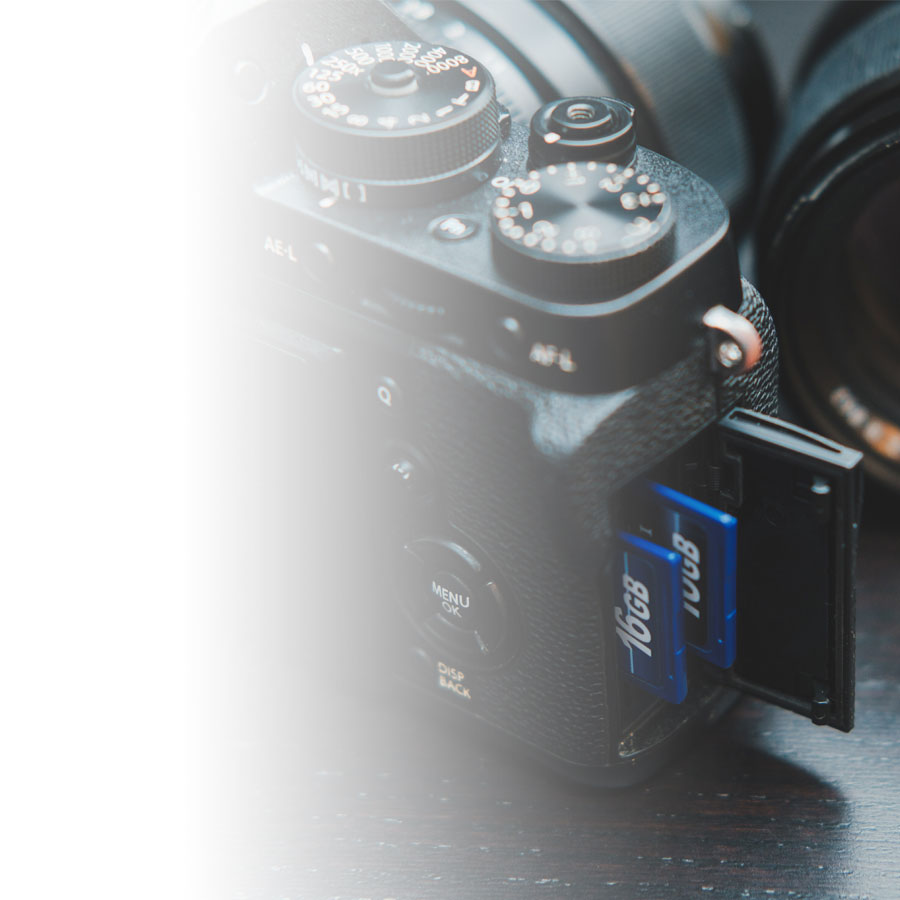Memory cards don’t just allow you to store photos, they let you take advantage of features like burst or HD video modes. Choosing the one that’s right for you means not having to constantly delete older pictures in order to make room for new ones...
Here are a few key pointers to help you choose the right memory card for your camera.

Memory card standards and formats
- Compact Flash, Secure Digital (SD), MS (Memory Stick)... there are several card standards on the market, SD being the most popular.
- There are three different SD card formats: standard, mini and micro.
- Refer back to your device’s user manual for memory card compatibility information.
Memory card speed
Your memory card’s data transfer rate is equivalent to its speed and is indicated by class: the higher the class, the higher your card’s speed.
To determine whether or not your card is too slow for your needs, check to see if:
- transferring photos from your camera to your computer seems to take a long time;
- memory-hungry features such as HD video or burst mode seem sluggish.
Choosing the right card depends on intended use. Intermediate and advanced photographers will want to go for higher class cards, while most photo enthusiasts will be quite content with class 5 or 6 cards, which handle burst and HD video modes very well.
Memory card capacity
Your card should be adapted to your needs. To determine just what those needs are, consider the following:
- Multiple cards: if you haven’t already done so, you should consider playing it safe and avoid putting all your eggs in one basket—buy two 8 GB cards rather than a single 16 GB card, for example.
- How many pictures do you take per shooting or between transfers to your computer? A 4 GB card has a storage capacity of, give or take, 1000 10 Mpx photos in JPEG format; a 8 GB card will store twice that amount and a 64 GB card over 12,000 photos—though figures will vary depending on your camera’s sensor size.
- What is your preferred photo resolution? If you shoot in RAW format, for example, which is much more memory intensive than JPEG, you’ll need to take into account that while a 4 GB card will allow you to store 1000 or so 10 Mpx photos in JPEG format, it will only hold 200 in RAW.

Memory card reader
Does your computer have a dedicated memory card slot? If it doesn’t, you’ll have to purchase an adapter or memory card reader. Most computers will allow you to read multiple memory card formats—convenient for those with multiple devices. There are also Eye-Fi wireless cards that allow you to transfer photos directly over Wi-Fi.

Memory card maintenance
- Before using a new card, format it to your camera.
- Turn off your camera before removing the card.
- Avoid touching the card’s gold plating, as they are electronic circuits.


